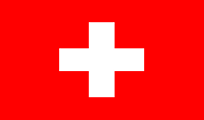This page does not support your web browser (Internet Explorer). For more security and speed, please switch to an up-to-date browser.
Update Now- Home
- Wine expertise
- Wine encyclopaedia
- All about rosé


All about rosé
Understanding rosé
Rosé, or rosato, is essentially red wine lite. Both wines draw their colour from the grape skins, as that’s where the pigment is found – not in the pulp of the grapes. So when you press red grapes, you get white juice. If you want the wine to change colour, it must have contact with the skins. These are what gives the must its colour. This contact can last up to three weeks for red wines; but for rosé, it all goes much quicker: Just a few hours, and the must reddens.


Go for it! Rosé tastes amazing in a cocktail. We’re thinking ice-cold rosé sangria, or an Aperol Spritz with rosato, or a rosé spritzer with ripe strawberries and fresh mint … That summer feeling at its best!


Licence to drink
Rosé isn’t a wine for storing. It should be finished off after a single summer. An easy task, right?






Mealtime joker
There are some dishes that stubbornly put up a fight against wine. Enter rosé! Bitter vegetables, such as artichokes? The perfect companion. Salty, oily little fish, such as sardines or anchovies? They jump for joy at the company of rosato. Rosé can really be enjoyed with anything. It is a fantastic barbecue wine, and pairs well with spicy food, salumi, strawberries, goat’s cheese and even lamb.
The 3 methods of rosé production
Saignée
The Saignée method – from the French «saigner», to bleed – involves the winemaker removing a portion of the slightly coloured must shortly before fermenting a red wine. This leaves him with two wines: a concentrated red plus a smooth rosato. It’s a win-win!
Maceration
Maceration comes from the Latin «macerare», to soak. And that’s exactly what is done to red grapes to make rosé. The grape skins are kept in contact with the juice long enough to give it a pink colour. The grapes are then pressed and the juice continues to ferment on its own.
Assemblage
Red and white wine are mixed together and you get – that’s right: rosé. But bear in mind, this method is only allowed for sparkling wines in the EU.
50 Shades of Pink
The spectrum of rosato stretches from a delicate onion-skin colour to a bright salmon pink. What colour do you prefer?


Our range of juicy rosati
-
Add to Wish List
France, Côtes du Luberon
 2024
2024Château Val Joanis rosé – AOP Luberon, Château Val Joanis
50 % Syrah, 45 % Grenache noire, 5 % Roussanne
75 clDetails
 CHF13.30
CHF13.30 -
Add to Wish List
Italy, Sicily
 2024
2024Regaleali Le Rose – Terre Siciliane igt Tenuta Regaleali, Tasca
Nerello Mascalese
75 clDetails
 Special Price CHF10.60 Regular Price CHF12.50
Special Price CHF10.60 Regular Price CHF12.5015%
-
Add to Wish List
Italy, Tuscany
 2024
2024Scalabrone – Bolgheri rosato doc, Tenuta Guado al Tasso
Cabernet Sauvignon, Merlot, Syrah
75 clDetails
 CHF19.00
CHF19.00 -
Add to Wish List
Italy, Puglia
 2024
2024Rosé – Castel del Monte doc, Rivera
100 % Bombino nero
75 clDetails
 CHF9.00
CHF9.00 -
Add to Wish List
Italy, Lazio
 2024
2024Sorélle – Lazio igp Tenuta Montiano, Cotarella
92 % Merlot, 8 % Aleatico
75 clDetails
 Special Price CHF20.40 Regular Price CHF24.00
Special Price CHF20.40 Regular Price CHF24.0015%
-
Add to Wish List
Italy, Tuscany
 2024
2024Più Vino Rosato – Toscana igt, Tenuta Vallocaia
100 % Sangiovese
75 clDetails
 CHF18.00
CHF18.00 -
Add to Wish List
Italy, Sardinia
 2024
2024Anemone – Alghero Rosato doc, Sella & Mosca
Cannonau
75 clDetails
 CHF9.50
CHF9.50 -
Add to Wish List
Italy, Tuscany
 2024
2024Gemella rosato – Toscana igt, Tenuta Vallocaia
100 % Sangiovese
75 clDetails
 Special Price CHF14.00 Regular Price CHF16.50
Special Price CHF14.00 Regular Price CHF16.5015%
-
Add to Wish List
Italy, Tuscany
 2023
2023«A» – Toscana rosato igt, Aldobrandesca
100 % Aleatico
75 clDetails
 CHF36.00
CHF36.00





Validate your login